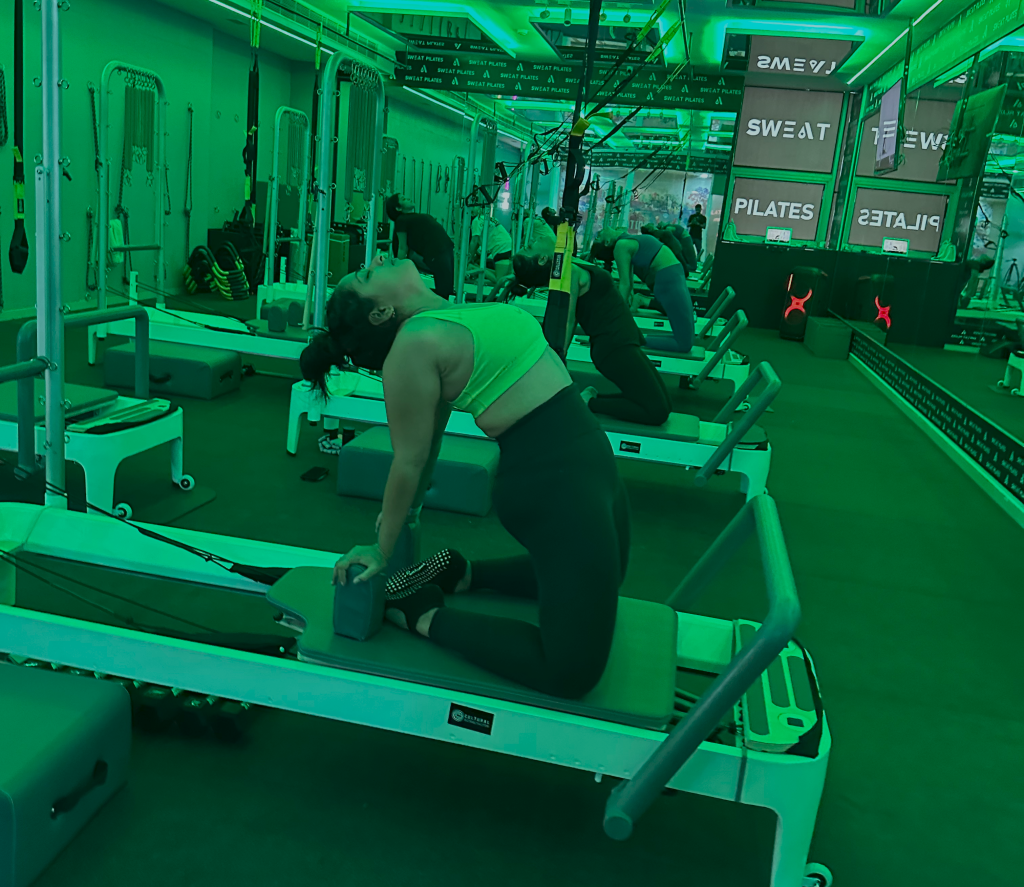Can I Practise Pilates If I Have Osteoporosis?
If you are someone who is looking for an answer to this question, I’m glad to tell you it is YES. Pilates can have a lot of benefits for someone with osteoporosis. Read on and find out more about Pilates and osteoporosis.
What is osteoporosis?
This is a condition where the bone becomes brittle, fragile, and more prone to fractures due to loss of tissue, hormonal changes, or even deficiency of vitamin D or calcium. Mainly affecting women over 50. To prevent this you must focus on your bone health from an early stage, One of the many positive changes you could make is joining a pilates practice.
Pilates is an exercise that is easy on the joints and bone-friendly exercises can be beneficial for good bone health and is safe for those with low bone density, osteopenia, and osteoporosis.
Can I do Pilates if I have osteoporosis?
Yes, you definitely can. The word osteoporosis is derived from the Latin word for “Porous bones”. The spine and hips are more at risk. Twisting or rounding of the backbone of any kind is not recommended.
Armed with some guidelines, there are many benefits of Pilates for people with osteoporosis. Pilates is known to be a low-impact exercise that is low-stress on the joints and is gentle and adaptable to all stages of life.
Be it mat pilates or reformer pilates, it strengthens the core and trunk muscles. These types of exercise make work and day-to-day activities easier for people with osteoporosis.
What are the benefits of Pilates for osteoporosis?
There are numerous benefits to osteoporosis with pilates, but at the same time, it is important to note that traditional pilates class is not always suitable for someone with low bone density. The best option in such a case would be to work one-on-one with a trainer so that they can guide you and make sure nothing goes wrong. Some benefits of the right pilates exercises are:
- Prevents bone deterioration
Most studies do find very little to no increase in bone density after Pilates, but at the same time, it is known to prevent bone deterioration further. Bone density is important but it is not the only factor that makes or breaks your bone. Bones need to be dense and resilient. To increase density the bone must adapt to new workout routines.
- Reduces pain
Breath, precision, Concentration and mind and body connection are the foundation of Pilates exercises. Breathing can calm your nerves and relax you, a mind and body connection can make you self-aware and more in charge of your surroundings. Studies show that Pilates boosts mood, decreases pain, and increases quality of life.
- Posture correction and better balance
A fall could be fatal to anyone with osteoporosis. Practising Pilates could help you have a better posture and balance drastically reducing the chances of a fall and making the individual more confident at the same time.
- Improves mobility
Improved balance, strength, flexibility, and better posture all contribute to better mobility. To have a good range of motion in the joint it is essential to have good mobility, in turn, also contributes to good health and better living, especially for people with osteoporosis.
Pilates Risks for people with osteoporosis
A few of the more traditional Pilates workouts are not suitable for people with osteoporosis.
- Avoid: Too much twisting or flexion is not ideal or good in any way, These movements involve exercises like Rolling like a ball, open leg rocker, control balance, jackknife, hundred, saw and rollover.
- Instead: increase core strength with a single leg kick, plank with knees on the mat, and pre-pilate exercise that doesn’t require you to lift the head off the floor ( marching, toe-tap, dead bug). Focus on extension or back bending and hinging from the hip with a flat back.
- Avoid: Deep spinal twisting should be avoided at all costs.
- Instead: gently twist both shoulders on the mat (keeping the chest broad). This will assist in activities like driving and activities involving head turns.
An excellent pilates instructor is all you need to guide you throughout your journey so you can get the most out of your workout and be safe from any risks at the same time.
Safe Pilates Exercises for someone with osteoporosis (mat edition)

- Single and double-leg kicks
- Side-lying series
- Leg pulls and circles
- Push-ups
- Chest expansion
Risky Mat Exercises.
- Roll up
- Roll over
- Jackknife
- Spine twist
- Saw
Good Pilates Reformer Exercises for People With Osteoporosis

- Footwork (using the reformer)
- Leg and arm circles (reformer)
- Pulling straps (reformer)
- Side splits (reformer)
- Leg-spring series (trap table)
- Chest expansion (trap table)
Unsafe Machine Exercises
- Short spines
- Tower
- Overhead
- Mermaid
If you are a person with osteoporosis, Pilates is an excellent option for you to improve your health drastically, With the right guidance and tips you can live your best life. We at Sweat Pilates eagerly look forward to helping and assisting you throughout your journey to health and fitness.
Stay tuned for more health and fitness posts. Check out our YouTube channel https://www.youtube.com/hashtag/sweatpilates for our dynamic workout videos and nutrition recipes.
